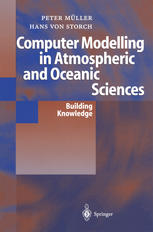

Most ebook files are in PDF format, so you can easily read them using various software such as Foxit Reader or directly on the Google Chrome browser.
Some ebook files are released by publishers in other formats such as .awz, .mobi, .epub, .fb2, etc. You may need to install specific software to read these formats on mobile/PC, such as Calibre.
Please read the tutorial at this link: https://ebookbell.com/faq
We offer FREE conversion to the popular formats you request; however, this may take some time. Therefore, right after payment, please email us, and we will try to provide the service as quickly as possible.
For some exceptional file formats or broken links (if any), please refrain from opening any disputes. Instead, email us first, and we will try to assist within a maximum of 6 hours.
EbookBell Team

4.4
82 reviewsComputer modeling pervades today all fields of science. For the study of com plex systems, such as the environment, it has become an indispensable tool. But it is also a tool that is often misunderstood and misinterpreted. These dangers are particularly pronounced in the environmental sciences, an area of interest and concern not only to scientists, but also to the general public, the media, policy makers and powerful interest groups. We cannot experiment with our planet. The only quantitative tool available for the assessment of the impact of our actions today on the future environment and living conditions of later generations is numerical modeling. The better the general understanding of the potential and limitations of numerical models, the better the chances for a rational analysis and discussion of environmental problems and poli cies. But in addition to the more recent political issue of human impacts on the environment, numerical models play an important role for the forecasting of natural environmental variability, such as tides and storm surges or the weathcr, or for the interpretation of environmental changes in the past, such as the relation between the Late Maunder Minimum of the sunspot cycle from 1675 to 1710 and the winter half year cooling at the end of the 17th century. The reasons for misunderstandings and misinterpretations of numerical model results are manifold.